Cemetery Information
Irish graveyards boast a long and rich history. If you are unsure about permissions or rules for a particular graveyard, get in touch and we will be happy to answer your questions on
Bohernabreena Cemetery
Nestled along the serene Bohernabreena Rd in Dublin lies a place steeped in history and reverence – Saint Joseph’s Cemetery. Managed diligently by the South Dublin County Council, this sacred ground has a story that dates back to 1943, when Bohernabreena was a quaint village. Over the years, it has transformed from a traditional headstone-surrounded graveyard into a modern resting place adorned with lawn sections, offering a tranquil final resting place for loved ones. Let’s delve deeper into the fascinating journey of Saint Joseph’s Cemetery and the cherished memories it holds.
Originally established as a headstone and surrounding graveyard, Saint Joseph’s Cemetery has undergone a significant transformation in recent times. The transition to lawn sections, characterised by headstones without kerbs, has not only enhanced the aesthetic appeal but also created a serene environment that fosters reflection and remembrance.
Within the hallowed grounds of Saint Joseph’s Cemetery, a poignant tribute stands – the Angel’s plot. This dedicated space offers solace to grieving parents and families who have experienced the unimaginable loss of a child. Here, they can gather to hold heartfelt services and pay tribute to the young souls who left too soon.

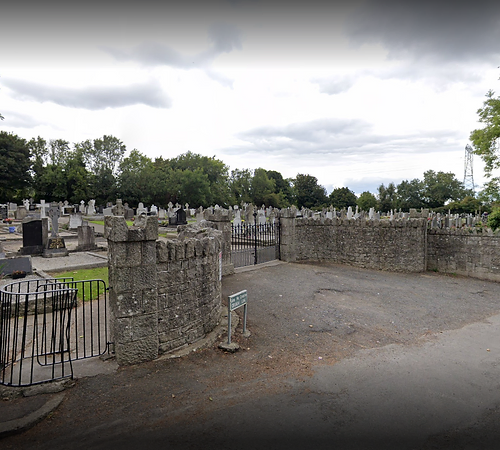
Cruagh Cemetery
Situated along Cruagh Road in Rockbrook, Rathfarnham, the historic cemetery thrived between the 1700s and 1900s, with an adjoining newer cemetery established in 1945. Under the custodianship of the South Dublin County Council, this burial ground encompasses around 900 plots, a substantial 870 of which are presently occupied.
This hallowed resting place accommodates the final repose of numerous notable individuals. Among these luminaries are Daniel A. Binchy, Tim Cahill-O’Brien, the esteemed Hotelier James Patrick Digby, the accomplished Businessman Margaret Gaj, the visionary Restauranteur Capt. T.J. Hanley, the revered Aviator Seán Keating, and the illustrious Lt. Cmdr. Frank Lynch, distinguished Commander of the Irish Navy. Capt. Jack Millar, a skilled Aer Lingus pilot, Charles H. Murray, a dedicated Civil Servant, Thomas O’Brien, Vice-President of I.T.G.W.U., and the esteemed Musician Dr. Hans Waldemar Rosen also find their eternal abode here. The cemetery enshrines the memory of “The Old I.R.A” veterans from the era spanning 1916 to 1923, such as Joseph P. Billings, Bartholomew Burke, and Frank Burke (Feargus De Búrca), among others.
This sepulchral sanctuary stands as a testament to the indelible legacies of these revered souls who have contributed significantly to various facets of society. The tranquil grounds serve as a poignant reminder of history’s tapestry interwoven with the stories of these remarkable individuals.
Deansgrange Cemetery
Situated at 2 Dean’s Grange Rd, Kill of the Grange, Blackrock, County Dublin, Deansgrange Cemetery stands under the meticulous care and ownership of Dún Laoghaire–Rathdown County Council. Commencing its legacy in 1865, this hallowed ground has embraced the final repose of over 150,000 souls. In concert with Glasnevin and Mount Jerome Cemeteries, it forms a triumvirate of grandeur, spanning 70 acres (28 ha) within the Dublin expanse. Notably, Deansgrange boasts a unique architectural facet, with its headstones and surrounds crafted to be 6 inches thick and high. The latest addition, the Garden Section, artfully accommodates lawn memorials/headstones, obtainable at €16,000 from DLRCOCO. Deansgrange also has an Angels Plot, which is immaculately tended, and offers solace to parents and families.
Deansgrange's hallowed grounds enshrine illustrious personalities, including:
Seán Lemass (1899–1971), eminent Taoiseach and stalwart of Fianna Fáil.
Todd Andrews (1901–1985), luminary of Irish Republicanism, who later dedicated his service to the civil domain.
Kathleen Clarke (1878–1972), an indomitable figure in Irish republican Sinn Féin and Fianna Fáil, a revered TD and Senator, and widow of Thomas J. Clarke, an icon of Irish revolution.
Reginald Dunne (died 1922), a resolute Irish republican.
Séamas Ó Maoileoin (1893-1959), distinguished veteran of the Irish War of Independence.
John Talbot Power, 3rd Baronet of Edermine (1845–1901), a scion of Leopardstown Park and grandson of the founder of Power’s Distillery, Dublin.
Senator William Quirke (1896–1955), a potent force within Fianna Fáil, entrepreneur, and IRA leader in Tipperary during the fervour of the Irish War of Independence and Civil War.
Joseph O’Sullivan (died 1922), a valiant Irish republican.
John Howard Parnell (1846–1923), a political luminary and elder sibling to the revered Charles Stewart Parnell.
Leon Ó Broin (1902–1990), a lauded wordsmith.
Kathleen Lynn (1874–1955), an ardent suffragette, integral to the Irish Citizen Army, and a respected TD for the Dublin County constituency.
Dermot Morgan (1952–1998), an illustrious wit and actor.
John McCormack (1884–1945), a tenor of celestial acclaim and was bestowed with papal countship.
Louie Bennett (1870–1956), a torchbearer of suffrage, trade unionism, journalism, and literature.
Richard Irvine Best (1872–1959), a luminous Celtic scholar, and countless more, their legacy eternally etched within these sacred confines.
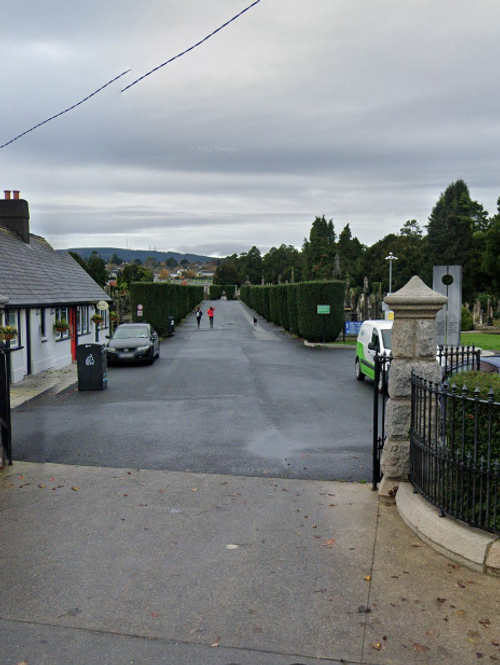
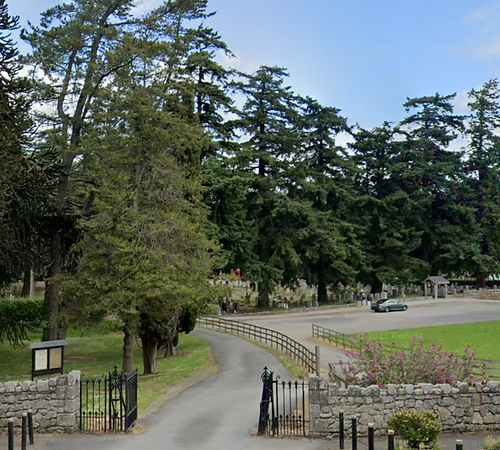
Enniskerry Cemetery St Patrick’s Churchyard
In County Wicklow, St. Patrick’s emerges as a venerable exemplar of ecclesiastical grandeur. This sanctified edifice, an embodiment of the Church of Ireland, was meticulously ordained into existence in 1859, orchestrated under the patronage of Mervynn Wingfield, the distinguished 7th Earl of Powerscourt. Its genesis was a responsive retort to the ecclesiastical dearth faced by the Protestant denizens of the village, who yearned for a proximate locus of worship.
The architectural majesty of St. Patrick’s is serenaded by the resplendent vistas that enfold it, with the imposing Sugar Loaf Mountain lending an awe-inspiring tableau to its environs. Eminent among the sepulchral memorials adorning this hallowed ground is the resting place of the illustrious artist, Paul Henry (1876-1958). Revered as Ireland’s preeminent maestro of landscape portrayal, Henry’s oeuvre reverberates with the scenic splendours of Connemara and the western expanse of Ireland.
Esker Cemetery
Nestled along the picturesque Esker Lucan-Newlands Rd, within the enclaves of Esker North, Lucan, in the heart of Co. Dublin (postcode: K78 K039), rests an exquisite testament to history, overseen by the South Dublin County Council. This hallowed ground unveils a tapestry of memorials, eloquently echoing the legacies of bygone eras spanning from the 18th century to the dawning of the 20th century.
Central to this enclave of reminiscence is the venerable original cemetery, a sanctified repository graced by time-weathered church ruins, zealously safeguarded under heritage aegis. A palpable sense of continuity reverberates as this sacred expanse gracefully transcends the thoroughfare, unfurling its narrative onto a new canvas – the newer section, where the embrace of history persists.

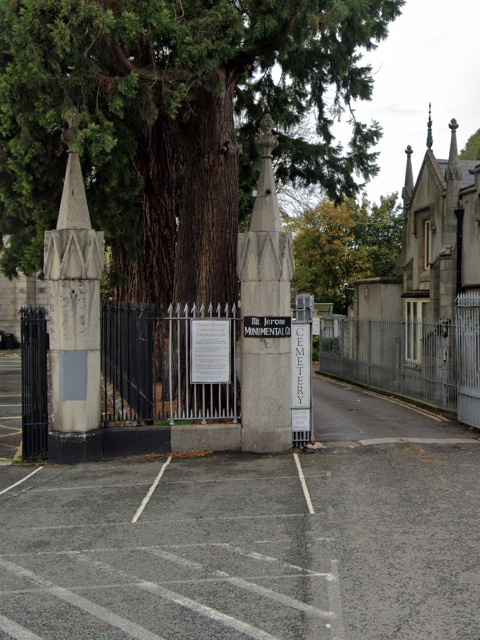
Mount Jerome Cemetery
Nestled along the distinguished thoroughfare of 158 Harold’s Cross Road, in the heart of Harold’s Cross, Dublin, lies the eminent Mount Jerome Cemetery & Crematorium. An esteemed bastion of history since its inception in 1836, this sacred ground has borne witness to the interment of over 300,000 souls. Its custodianship rests with the venerable General Cemetery Company of Dublin, encompassing a sprawling expanse spanning some 50 acres.
Initially consecrated as an exclusive sepulchral enclave for the Protestant faithful, the cemetery’s embrace expanded in the 1920s to enfold Roman Catholics within its hallowed precincts. A pivotal milestone was reached in the year 2000, when Mount Jerome Cemetery bequeathed unto itself the addition of a consecrated crematorium, harmoniously melding modernity with tradition.
The cemetery’s architectural tapestry predominantly boasts the elegance of headstones and surrounds, with most of these graceful enclosures crafted from 5” by 4” natural stone, bespeaking a timeless elegance. Notably, interred within these sacred grounds rest luminaries of erudition, valour, and creativity, including luminaries such as the esteemed physician and surgical virtuoso Robert Adams (1791–1875), the gifted scribe Maeve Binchy (1940–2012) – her remains consigned to the crematory’s embrace – and the lauded German musical maestro Fritz Brase (1875–1940).
In commemoration of their indelible legacies, this consecrated earth enfolds the mortal vestiges of Peter Caffrey (1949–2008), acclaimed thespian of “Ballykissangel” fame, and the literary luminary William Carleton (1794–1869), whose eloquence breathed life into his written words. Revered too is Thomas Caulfield Irwin (1823–1892), poet, writer, and scholar, who rests in eternal repose amidst these revered grounds.
Epitomising a legacy of unwavering commitment to Irish ideals, Michael Colivet (1882–1955), venerated for his tenacious dedication to the Irish Volunteers and his pivotal role in the genesis of the Irish Republic, eternally rests in this sacred expanse. The storied ranks of heroes also encompass Paddy Daly (1888–1957), whose valorous exploits during the War of Independence resonate in perpetuity, and Derek Davis (1948–2015), a prominent figure in the realm of RTE broadcasting.
The sacred sepulchre cradles the illustrious lineage of the Guinness dynasty, including the philanthropic Benjamin Guinness (1798–1868), whose brewing prowess was matched only by his magnanimity. This sacred ground further enshrines the creative brilliance of sculptors such as Joseph Robinson Kirk (1821–1894) and Thomas Kirk (1781–1845), who left an indelible artistic imprint upon their world.
Countless other luminaries, from the erudite Irish Jewish writer David Marcus (1924–2009) to the pioneering obstetrician William Fetherstone Montgomery (1797–1859), grace these consecrated bounds. Soldiers of valour, exemplified by the heroic acts of Hans Garrett Moore VC (1830–1889) and Arthur Thomas Moore VC (1830–1912), find eternal solace here. The cemetery’s narrative is also woven with the threads of renowned figures such as ophthalmic surgeon Edward Perceval Wright (1834–1910) and the artistic visionary Jack Butler Yeats (1871–1957).
Mount Venus Cemetery
Situated on Mount Venus Rd, Rathfarnham, Dublin 16, this privately owned cemetery, established in 1994, provides a serene resting place for over 2000 individuals. Distinguished by its status as a lawn cemetery with unobtrusive surroundings, the site boasts a 42” height limitation. Noteworthy is the presence of a poignant remembrance wall dedicated to cremations.
Among the interred, the eminent Irish actor David Kelly graces this hallowed ground. A luminary of both stage and screen, Kelly’s illustrious career spanned decades, commencing in the 1950s. His indelible contributions left an indelible mark on diverse audiences. Recognised as Rashers Tierney in Strumpet City to Irish viewers, Cousin Enda in Me Mammy to British aficionados, and Mr. O’Reilly in Fawlty Towers to British audiences, Kelly’s transcendent talent reverberated across borders. In the realm of American cinema, he endeared himself as Grandpa Joe in Charlie and the Chocolate Factory and etched his name as Michael O’Sullivan in Waking Ned.

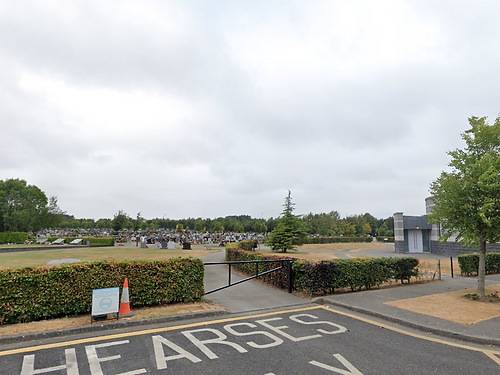
Newlands Cross Cemetery
Situated adjacent to Ballymount Road in Dublin 24, the renowned Glasnevin Trust-operated cemetery, overseen by Dublin Cemeteries Trust, offers a distinctive resting place. Unveiled in the year 2000, this sprawling 40-acre cemetery unveiled an avant-garde crematorium a mere year later. This cemetery distinguishes itself as a complete lawn cemetery, characterized by the absence of enclosures, allowing only memorials and headstones to grace its landscape, adhering to a stringent height parameter of 37.5 inches.
Among the noteworthy monuments, an especially poignant one commemorates Father James McCartan, a clergyman who found his final resting place here, tragically succumbing to his fate in the vicinities of Lucan in 1807. Another remarkable memorial showcases an intricately carved representation of skull and crossbones, encapsulating the poignant memento mori concept. In 1989, a comprehensive transcription of the grave markers was published, enshrining details of around 60 cherished memorials, preserving their legacies for posterity.
Palmerstown Cemetery
Situated on Kennelsfort Road in Palmerstown, Dublin 20, with the distinctive postcode D20Y240, lies an esteemed burial ground overseen by the esteemed custodians of Dublin Cemeteries Trust, namely the Glasnevin Trust. Established in the year 1978, this hallowed necropolis stands as a testament to solemn remembrance. Characterised as a sprawling lawn cemetery, it embraces an architectural ethos devoid of traditional enclosures, allowing for the unfettered grace of memorials and headstones. An intriguing facet of this landscape is the absence of vertical limitations on these commemorative structures; however, a unifying thread binds them within the generous breadth of a 48-inch expanse.
.

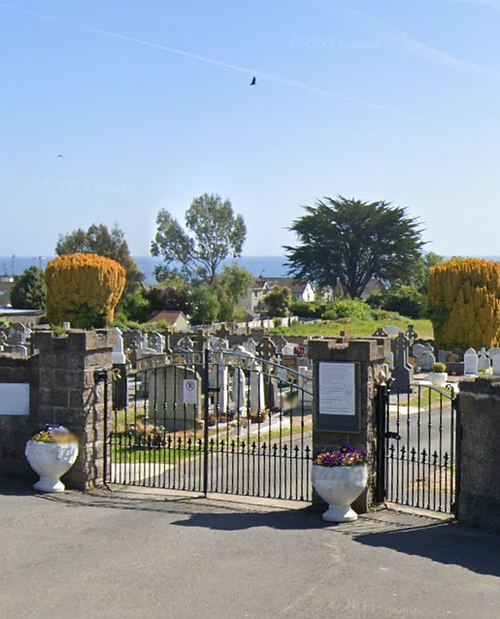
Redford Cemetery
Situated at R761, Redford, Greystones, Co. Wicklow, and under the stewardship of Wicklow County Council, this cemetery stands as a testament to thoughtful design. Embracing the concept of a full lawn cemetery, the grounds eschew elaborate enclosures in favour of dignified memorials and headstones. Notably, a height restriction of 6ft prevails, complemented by plinths or platforms measuring a generous 44 inches in width.
A preeminent memorial within this hallowed enclave pays homage to Joseph Ronald Ronnie Drew, an illustrious Irish folk singer. Instrumental in inaugurating the 1960s folk revival, Drew was the visionary behind the esteemed “Dubliners,” an iconic and influential ensemble in the realm of Irish traditional music. Revered for his inimitable vocals, it was his rendition of “Seven Drunken Nights” that garnered the group their inaugural top 10 hit in 1967.
Drew’s legacy burgeoned, his eminence underscored by a momentous occurrence on St. Patrick’s Day in 1968: a debut tour launch on the venerable Ed Sullivan Show. The ensuing years bore witness to an array of recordings and performances, including a storied engagement at the illustrious Royal Albert Hall.
In 1974, Drew embarked on a solo odyssey, resulting in a profusion of works that included “Ronnie Drew” (1975), “Guaranteed” (1978), “Dirty Rotten Shame” (1995), “An Evening with Ronnie Drew” (2004), and “A New World” (2006). Drew’s creative spirit found resonance in collaborations with luminaries like Antonio Breschi, Rory Gallagher, Jah Wobble, Bono, Elvis Costello, and Shane McGowan.
An emblematic gesture of respect materialised in February 2008 when U2, along with a constellation of distinguished Irish musicians, released “The Ballad of Ronnie Drew” – a harmonious paean celebrating Drew’s profound contributions to the rich Irish musical tapestry.
Saint Nahi’s Cemetery
Nestled at Churchtown Rd Upper, Churchtown Lower, Dublin 14, Saint Nahi’s Cemetery stands as a revered testament, cherished and overseen by the local Church of Ireland community. This hallowed ground bears witness to a tapestry of history, with over 10,000 recorded burials and an ancestral gravestone dating back to the year 1734.
Within these sacred confines, an array of narratives converges, including the resting places of Irish Republican figures such as Lorcain McSuibhne, a valiant member of the Irish Republican Army, and James Burke, a poignant casualty of the tragic events of Bloody Sunday at Croke Park.
Among the precincts of Saint Nahi’s, the legacy of Royal Irish Constabulary Officers and Freemasons find repose. Here, a solitary war grave commemorates Sgt. William Anthony Kavanagh, a young RAF Volunteer Reserve, whose earthly journey ended tragically in 1944.
Eminent amongst these grounds is the final resting place of George Johnstone Stoney, a luminous Irish physicist. His earthly remains brought back from London, find solace alongside those of his kin.
Enduring as a symbol of inclusivity, Saint Nahi’s Cemetery, with roots predating the Church of Ireland’s disestablishment in 1869, remains a sanctuary for interment, embracing all within the bounds of the Parish of Taney, irrespective of faith.
Among the distinguished interments, notable figures find an eternal abode, including the venerable Séamus Brennan, a stalwart Irish Politician and former Government Minister, the poetic and literary legacy of William Monk Gibbon, and the sagacious judicial mind of David Richard Pigot, a revered Judge.
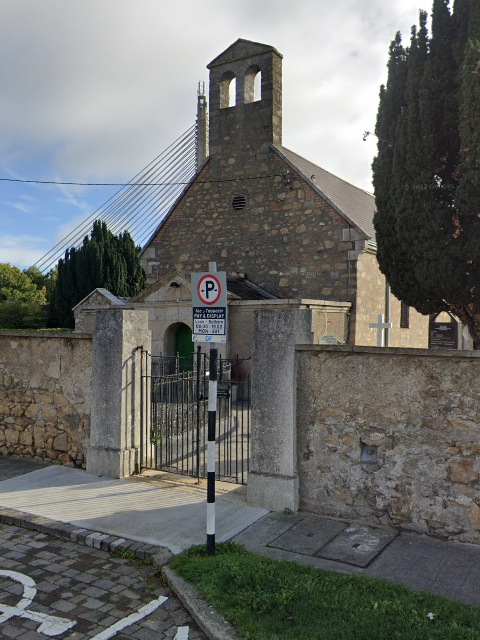

Saint Peter’s Cemetery
Along Chapel Lane, St. Peters Road in the enchanting locale of Little Bray, Bray, Co. Wicklow, lies a cemetery of profound historical significance. This hallowed ground unfolds in dual facets: an antiquated precinct nestled within the confines of the original ecclesiastical demesne, and a more contemporary expanse discreetly positioned at the hinterland of the venerable church.
The tapestry of Bray finds its course traced by the serpentine embrace of the River Dargle, demarcating a geographical duality. The northerly sector, christened as Little Bray, finds its abode in the bosom of County Dublin. Meanwhile, the southern stretch unfurls within the embrace of County Wicklow, encompassing the lion’s share of this charming township. Remarkably, the cemetery rests just within the purview of the northern riverbank, once encompassed by County Dublin, now seamlessly integrated into the fabric of County Wicklow.
It is believed that Saint Peter’s Church, gracing this locale, stood as Bray’s seminal parish sanctuary ere the town’s spatial expansion burgeoned during the twilight hours of the 19th century. An epitome of historical resonance, this cemetery and its ecclesiastical environs invite reflection upon the evolving tapestry of Bray’s rich heritage.
Shanganagh Cemetery
Situated along Dublin Road (Old Bray Road) in Shankill, County Dublin, Shanganagh Cemetery stands as a testament to particular care under the stewardship of the Dún Laoghaire–Rathdown County Council. Launched in 1984, Shanganagh Lawn Cemetery was designated as the preeminent resting place for South County Dublin for the ensuing century. The inaugural interment transpired in June 1984, and since then, the grounds have cradled nearly 16,500 cherished departures. A pivotal juncture arose in 1998, with the inauguration of the sprawling St. Helens plot, a pivotal expansion to the cemetery’s precincts.
Shanganagh boasts three additional interment sectors for coffin burials, namely St. Ciarans, St. Laurence, and St. James. Notably, a dedicated section, St. Marks, has been consecrated for the reverential internment of cremated remains. Notably, vehicular access is ensured to all burial sites, thus facilitating a seamless visitation experience.
Among the distinguished luminaries finding repose within Shanganagh Cemetery are former Irish Taoiseachs Garret FitzGerald (1926–2011) and Albert Reynolds (1932–2014). The hallowed grounds of Shanganagh stand as a testament to reverence, memorialisation, and perpetuity.


Springfield Cemetery
Situated in the idyllic locale of Ballymorris along the enchanting Killarney Road in Bray, Co Wicklow, lies the esteemed Springfield Cemetery. Exemplifying an impeccable fusion of natural serenity and human reverence, this sacred resting place stands under the meticulous stewardship and ownership of the esteemed Wicklow County Council.
Having commenced its solemn journey in 1982 through the visionary efforts of the Wicklow County Council, Springfield Cemetery has since cradled the earthly remains of over 3000 individuals. As a testament to its enduring significance, the cemetery presently rests at an approximate halfway point towards its capacity, poised to embrace the future with a forthcoming addition – a dignified cremation wall slated for construction within the forthcoming year.
The synergy of timeless tranquillity and profound commemoration renders Springfield Cemetery a hallowed ground, echoing with whispers of lives lived and stories untold.
